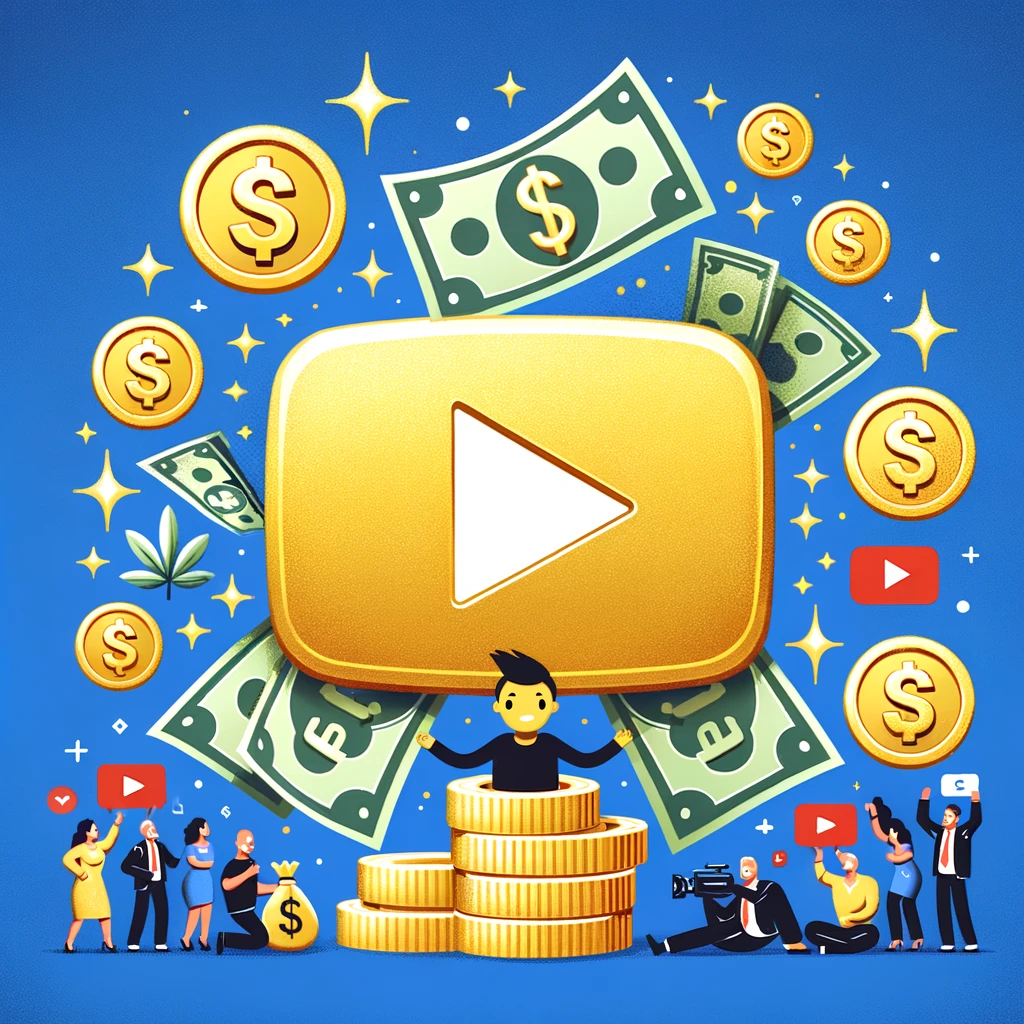Want smarter marketing? Join our FREE community — built for founders, marketers & creators.
YouTube Monetization: Turning Content into Cash 2024
For content creators, YouTube isn’t just a platform for sharing videos—it's a potent avenue for earning revenue. With over 2 billion logged-in monthly users, the potential to monetize content and generate substantial income is immense. But how do you navigate YouTube's monetization landscape? Let's explore the pathways to turning your content into cash on this dynamic platform.

For content creators, YouTube isn’t just a platform for sharing videos—it’s a potent avenue for earning revenue. With over 2 billion logged-in monthly users, the potential to monetize content and generate substantial income is immense. But how do you navigate YouTube monetization landscape? Let’s explore the pathways to turning your content into cash on this dynamic platform.
1. YouTube Partner Program (YPP)
- Why: YPP is YouTube’s primary monetization model, allowing creators to earn money from ads shown in their videos.
- How: Creators need to have 1,000 subscribers and 4,000 watch hours in the past 12 months to qualify. Once accepted, you can earn from ads (display, overlay, skippable, non-skippable, and bumper) and channel memberships.
2. Channel Memberships
- Why: Provides a steady stream of income and cultivates a closer bond with subscribers.
- How: Offer members exclusive badges, emojis, or access to members-only videos, live chats, or community posts.
3. Super Chat & Super Stickers
- Why: Enhance viewer interaction during live streams.
- How: Viewers can purchase Super Chats to highlight their messages or Super Stickers as fun, animated graphics during live chats, offering creators an additional revenue stream.
4. YouTube Monetization Premium Revenue
- Why: Earn from subscribers who watch your content without ads.
- How: When a YouTube Premium subscriber watches your content, you earn a part of their subscription fee.
5. Merchandise Shelf
- Why: Directly sell merchandise to your followers.
- How: Use YouTube’s integration with merch partners. Display your merchandise right on YouTube.
6. Sponsored Videos
- Why: Collaborate with brands for direct monetization.
- How: Partner with brands to create content promoting their products or services. Ensure transparency by marking videos as “contains paid promotion.”
7. Affiliate Marketing
- Why: Leverage your influence and audience to promote products and earn commissions. As a content creator, you have a unique opportunity to build trust and establish credibility with your followers. By sharing products or services you genuinely believe in, you not only provide value to your audience but also open up a stream of passive income. Every recommendation you make can turn into a potential sale, benefiting both you and your audience as they discover products that enhance their lives.
- How: To get started, simply promote products that align with your niche in your videos or other content. Be authentic in your recommendations—viewers appreciate transparency, and they are more likely to engage with content that feels genuine. In your video description or accompanying content, provide affiliate links to these products. For each sale generated through your unique link, you’ll earn a commission, creating a win-win situation. Over time, as your audience grows and trusts your recommendations, this strategy can become a reliable source of income, allowing you to monetize your influence without needing to create or stock your own products.
Advanced Tips for Maximizing Revenue:
- Diversify Monetization Strategies: Relying solely on ad revenue can be volatile. Integrate multiple monetization methods for stability.
- Engage with Your Audience: Regularly interacting with viewers can increase watch time, boosting ad revenue and the likelihood of gaining channel memberships.
- Optimize Video Titles and Descriptions: SEO isn’t just for websites. Improve your video’s discoverability with compelling titles, descriptions, and tags.
- Analyze YouTube Analytics: Understand which videos perform best in terms of engagement and revenue. Double down on content types and topics that resonate most with your audience.
- Stay Updated with YouTube’s Policies: YouTube’s monetization policies evolve. Regularly review them to ensure compliance and uninterrupted revenue flow.
In Conclusion
Monetizing on YouTube requires a blend of creativity, strategy, and diligence. By producing quality content, engaging with your audience, and wisely navigating the platform’s monetization tools, you can effectively turn your passion for content creation into a lucrative endeavor. As the digital sphere becomes more video-centric, the potential for YouTube monetization will only grow, presenting creators with unparalleled opportunities to turn content into cash.
Stay informed and inspired! Listen to the full episode here and subscribe to our podcast for more engaging discussions and valuable insights.



